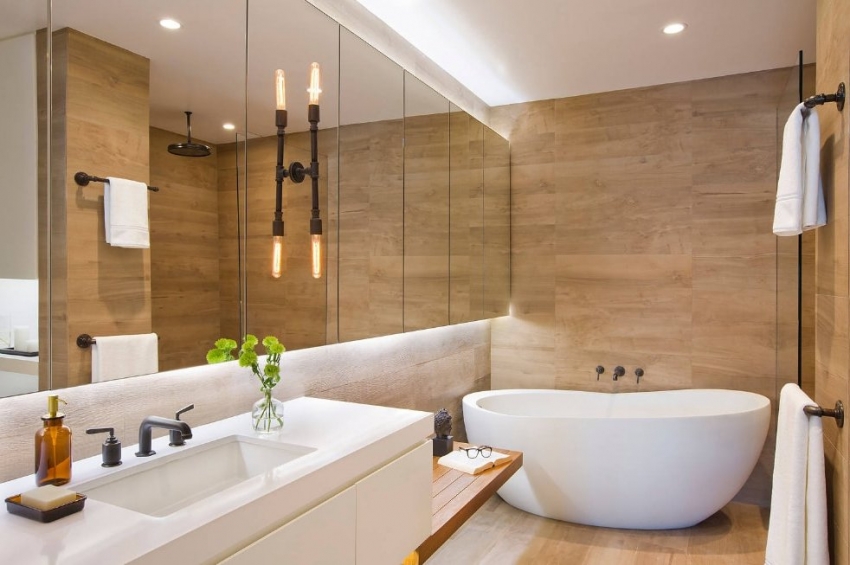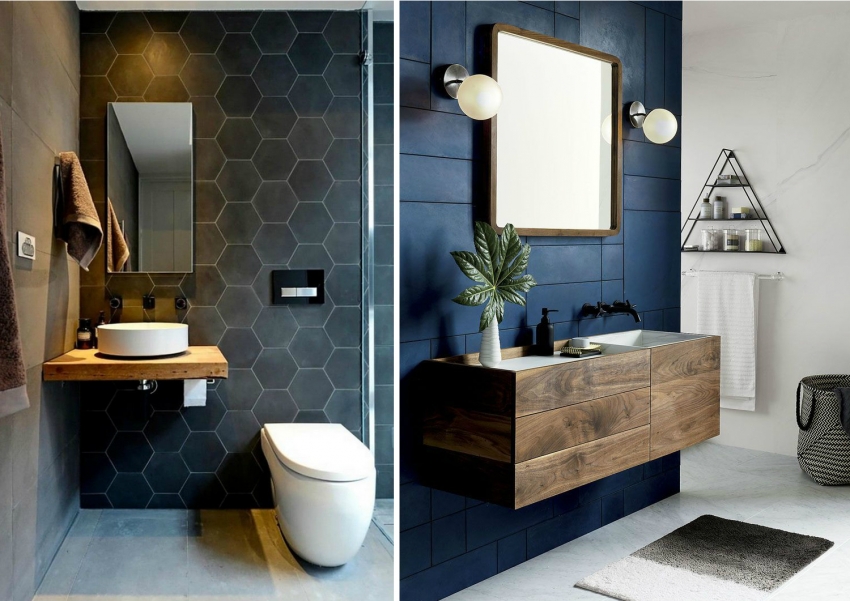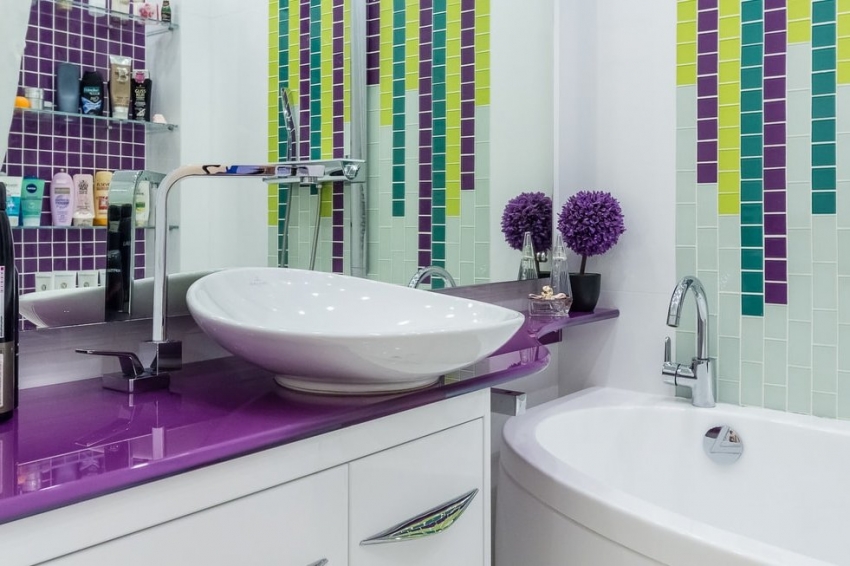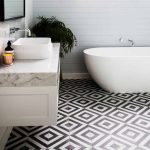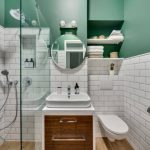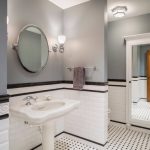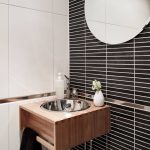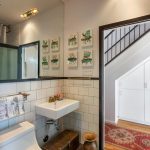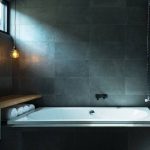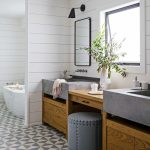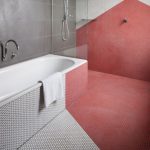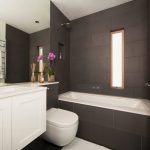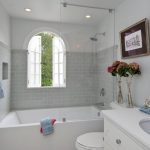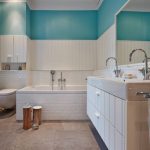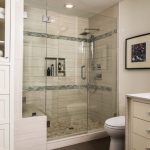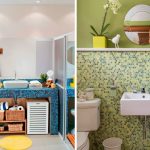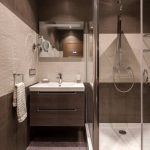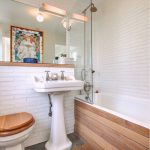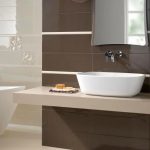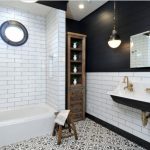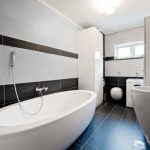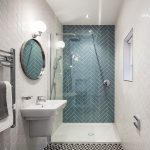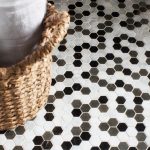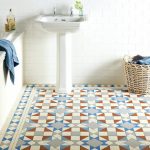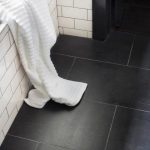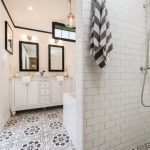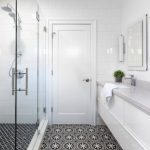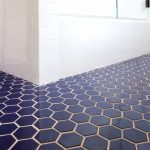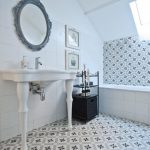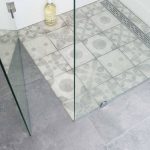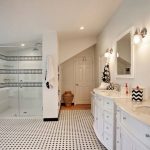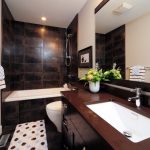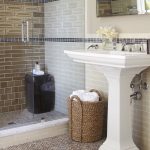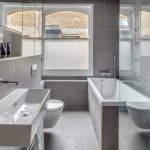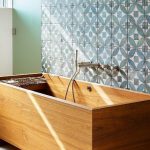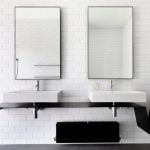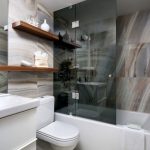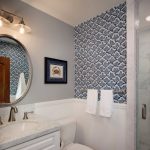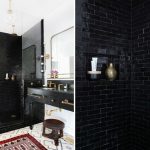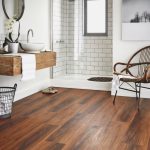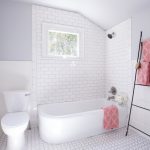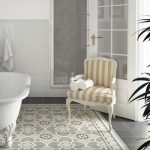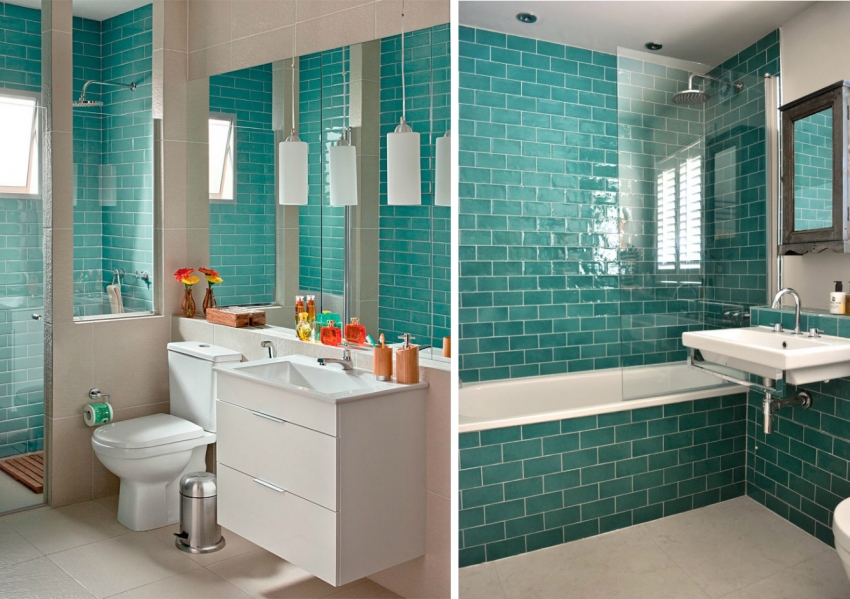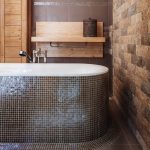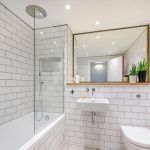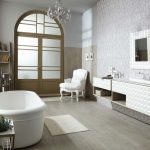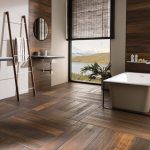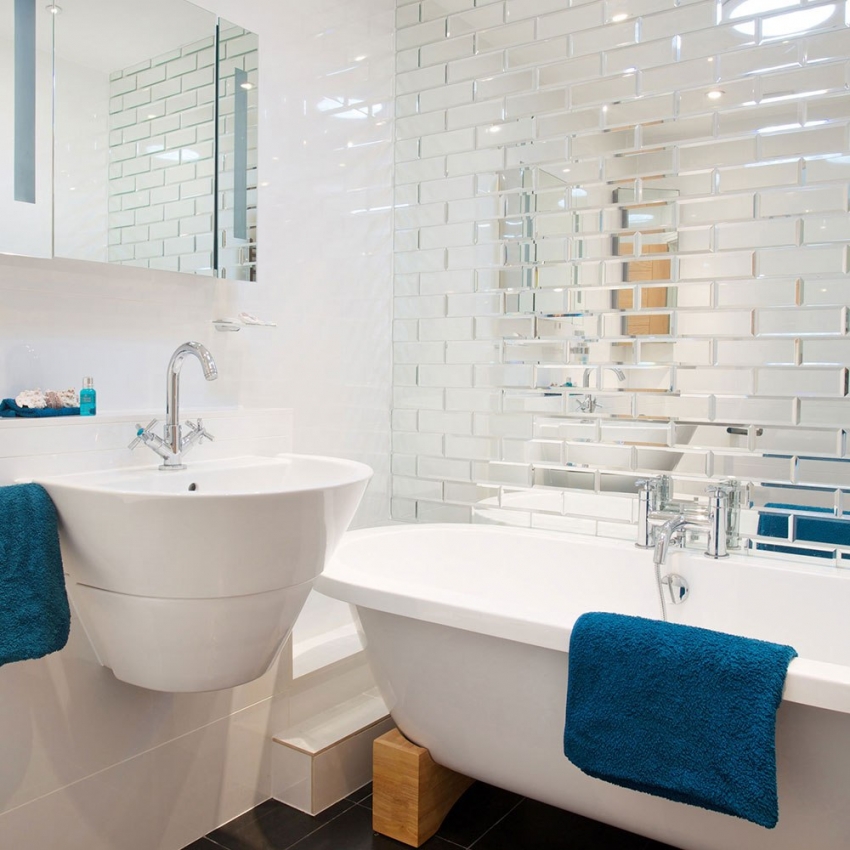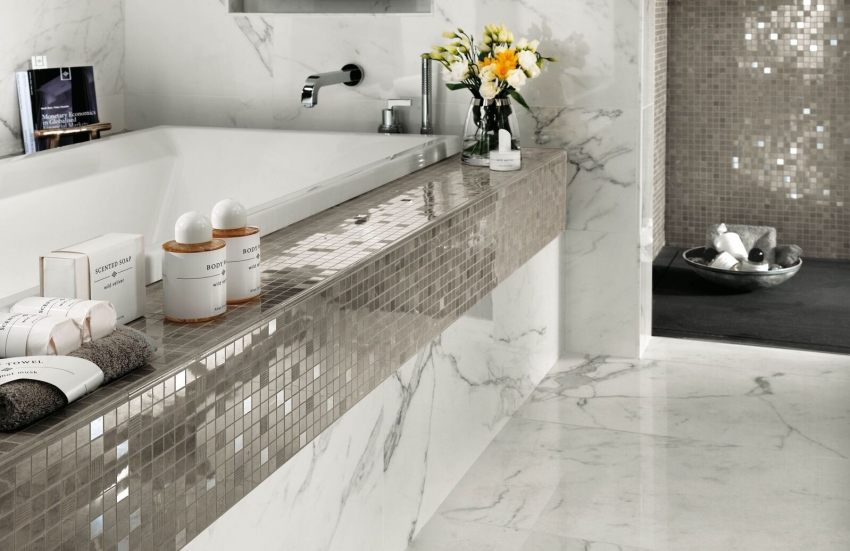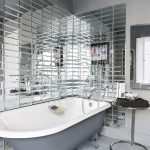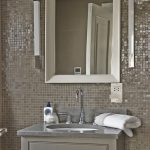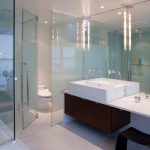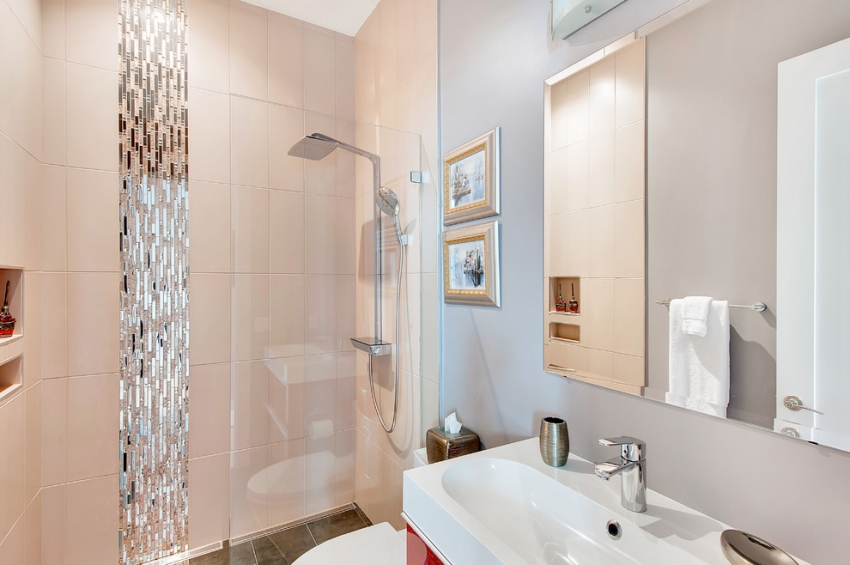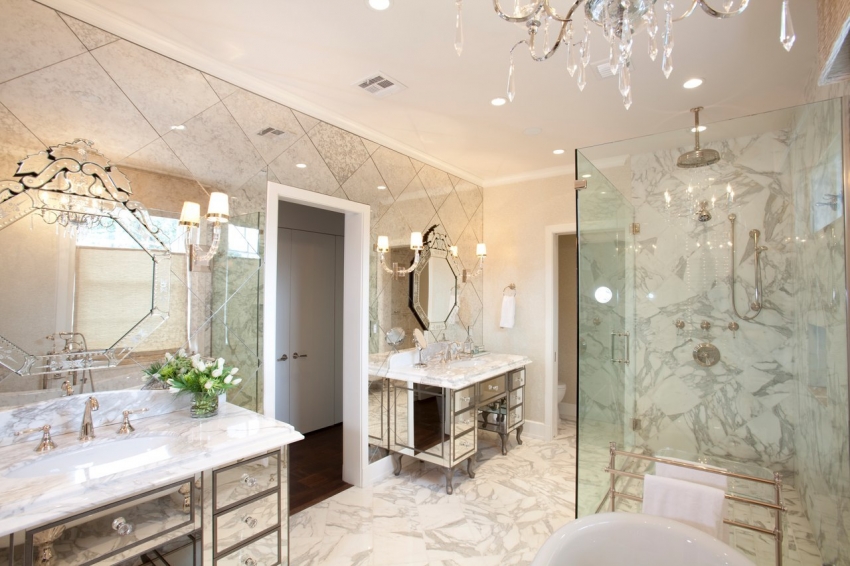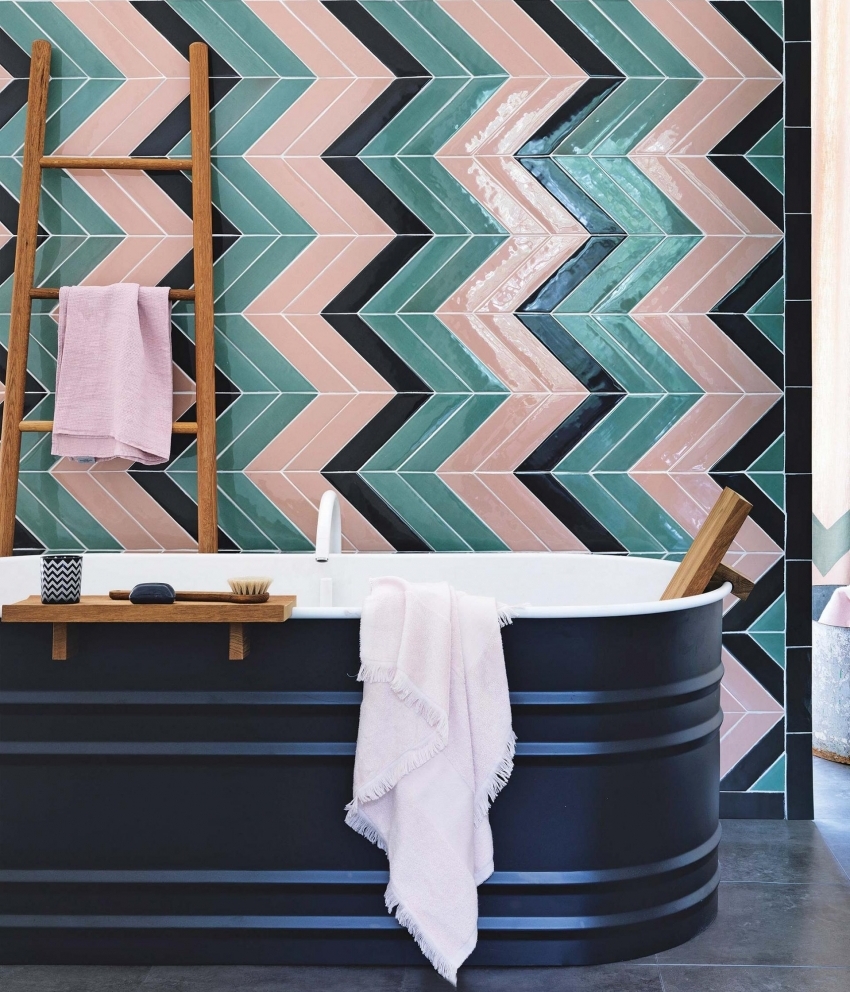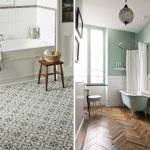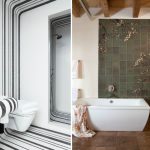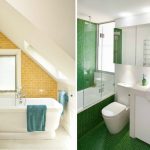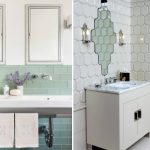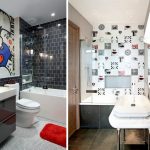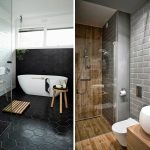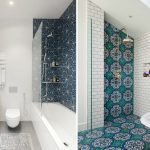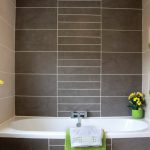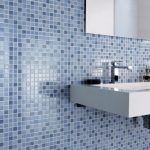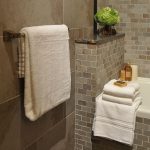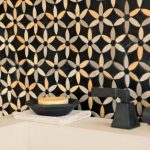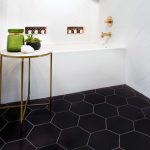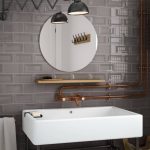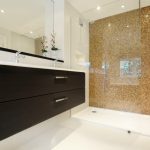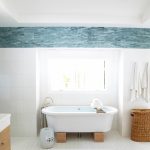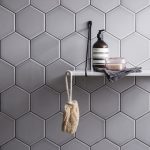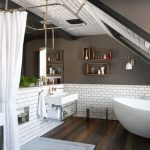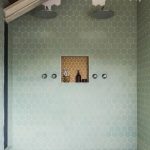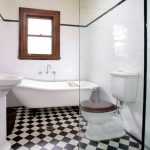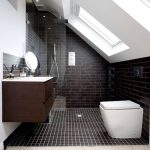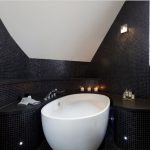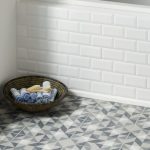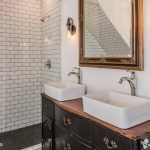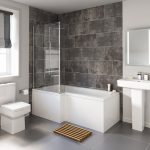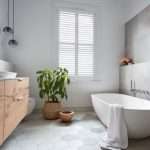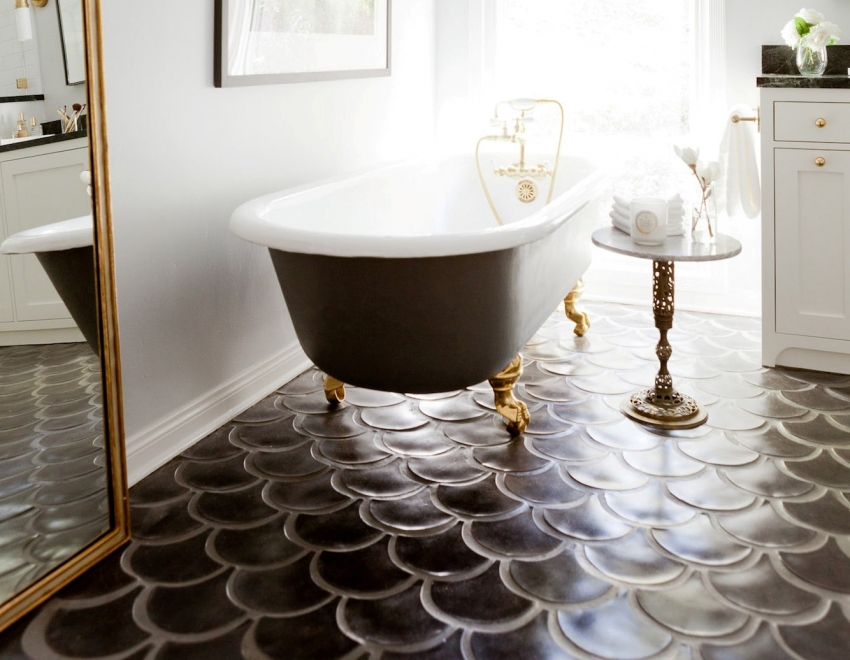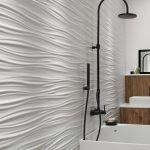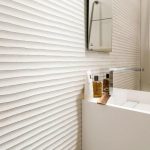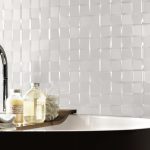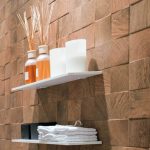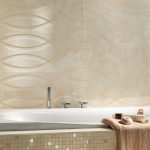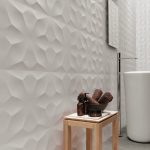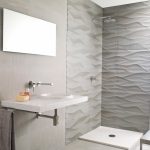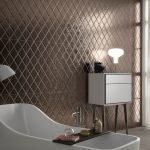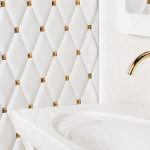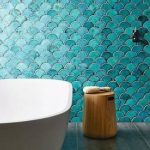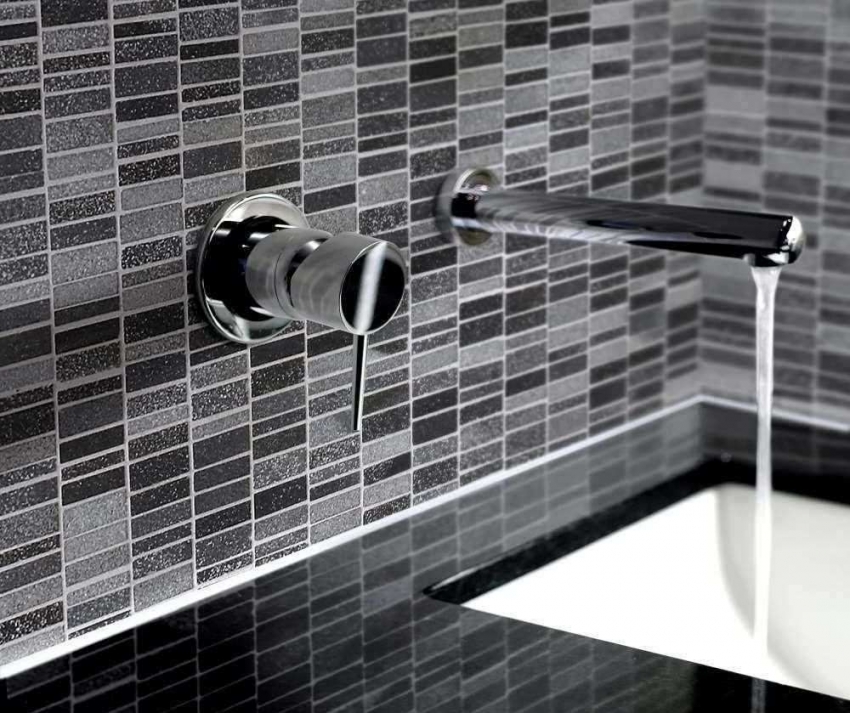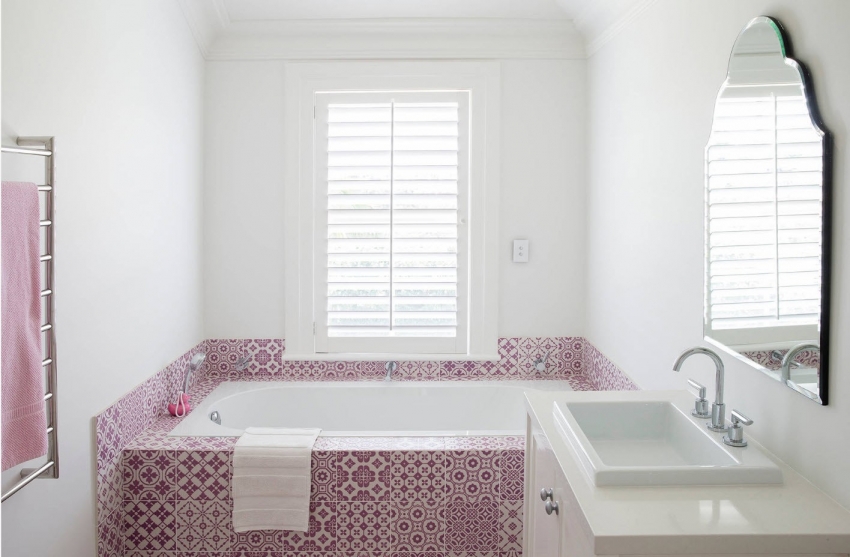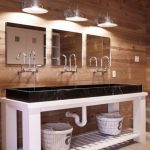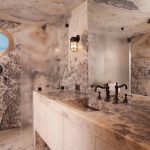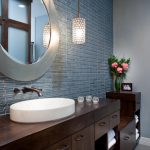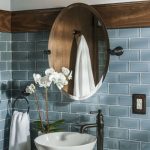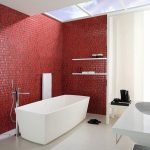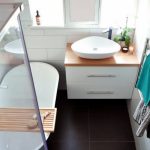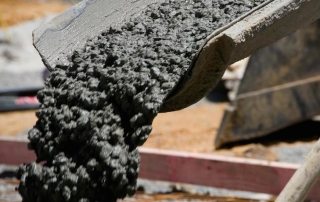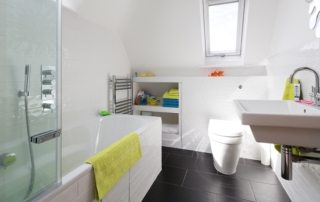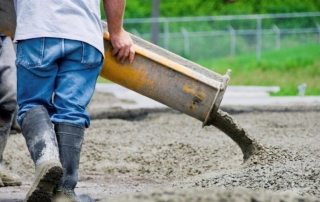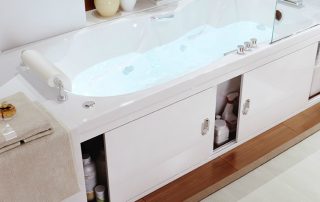Tile is a traditional finishing material because it has all the qualities required for this purpose. Being resistant to moisture, the tile is able to function properly for many years. Consider the principles according to which tiles for the bathroom should be chosen: design, photos of the best examples and original ideas for decoration.

Decorate the interior bathroom in a modern style, you can use the original tiles for wall decoration
Content [Hide]
- 1 Bathroom tiles: design, photos and benefits of use
- 2 How to choose a bathroom tile based on the technical characteristics of the material
- 3 Bathroom tiles: the secrets of choosing the right material
- 4 Tile laying options in the bathroom: photo examples of technologies
- 5 How can bathroom tiles be laid on the floor: photo examples
- 6 Bathroom Tile Color Basics: Room Design
- 7 Tiled bathroom options: secrets, tips and tricks
- 8 Mirror tiles in the bathroom: room design using unusual elements
- 9 Advantages and disadvantages of using mirror tiles for a bath photo examples of interiors
- 10 Fresh ideas for decorating a bathroom with ceramic tiles: photos of the best interiors
- 11 Varieties of tiles in the bathroom: photos and prices of some options
Bathroom tiles: design, photos and benefits of use
Bathroom tiles are used for decoration for a variety of reasons. The advantages of this material make it the most suitable option and allow you to create interiors that will last for many years. So, among the main advantages of such a solution, it is worth noting:
- a huge selection of colors and textures. On sale you can find material that imitates a wide variety of surfaces, including brick, stone, fabric. The use of wood-like tiles in the bathroom is especially popular;
- bathroom tiles have an extremely high level of wear resistance and practically do not lend themselves to mechanical damage during operation;
- the installation of tiles is quite simple, and can be done independently;
- the tile is resistant to detergents, including when it comes to aggressive chemical compounds;
- temperature differences in the room are not able to affect the material;
- the operational life of the tile is quite long, and with careful handling it can be more than a dozen years.
Of course, like any other material, bathroom tiles have some disadvantages, including the low thermal insulation properties of the material. In addition, the tiles can shatter if hit hard and hard, so do not drop heavy objects on them.
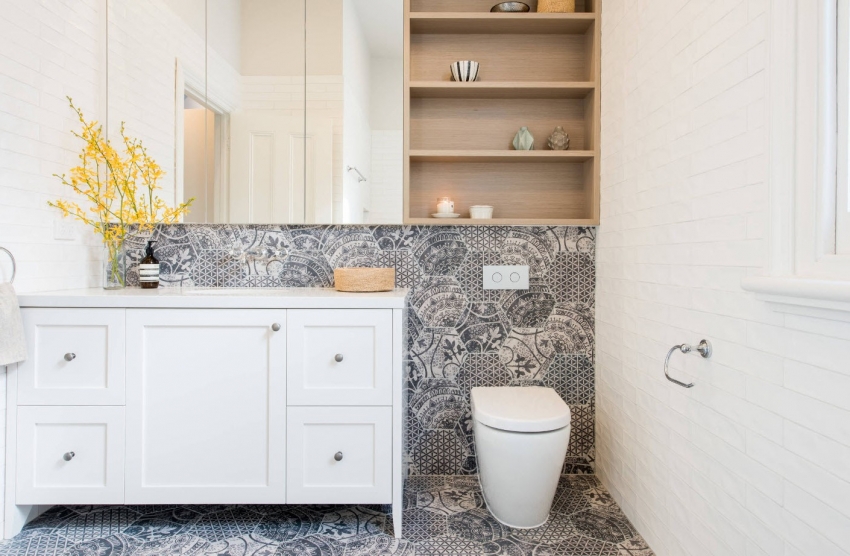
When using tiles with a repeating geometric pattern, carefully calculate the amount of material required before purchasing in order to avoid unattractive scraps near the wall or ceiling.
How to choose a bathroom tile based on the technical characteristics of the material
When choosing a tile for a bath, you need to understand what serious loads this finishing material will be subjected to, and, based on this, select tiles of suitable thickness. So, the walls of a room are usually less affected, therefore, tiles up to 1 cm thick will be enough for their decoration.But as a floor covering, it is better to consider stronger options - from 1 to 1.2 cm.
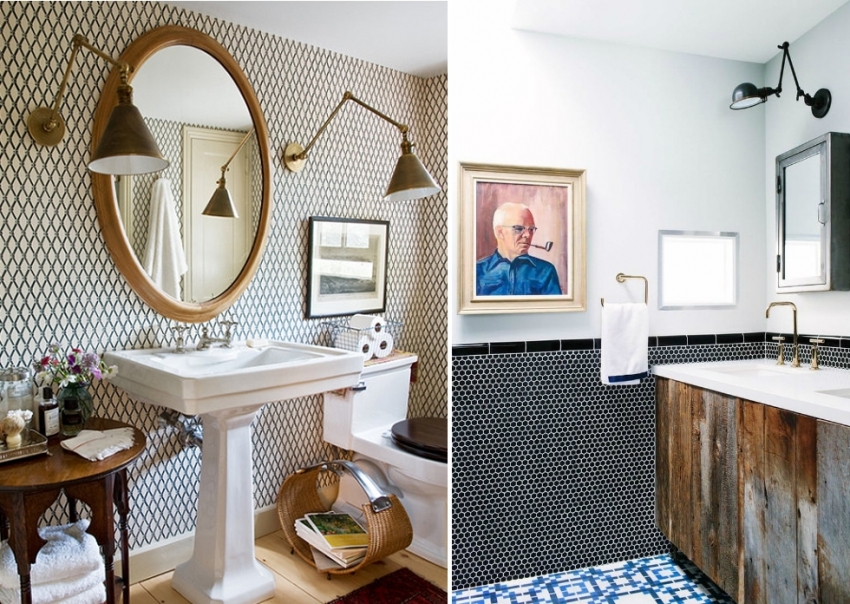
Finely patterned or shaped tiles mosaics goes well with gold fittings and bronze decor elements
In addition, it is extremely important to choose a tile size that will be commensurate with the area of the room. You should not purchase a large size finishing material if you have to arrange a small bathroom. First, it will look bad, and secondly, it will lead to an increase in the cost of purchasing the material, since in this case more trimming is required.
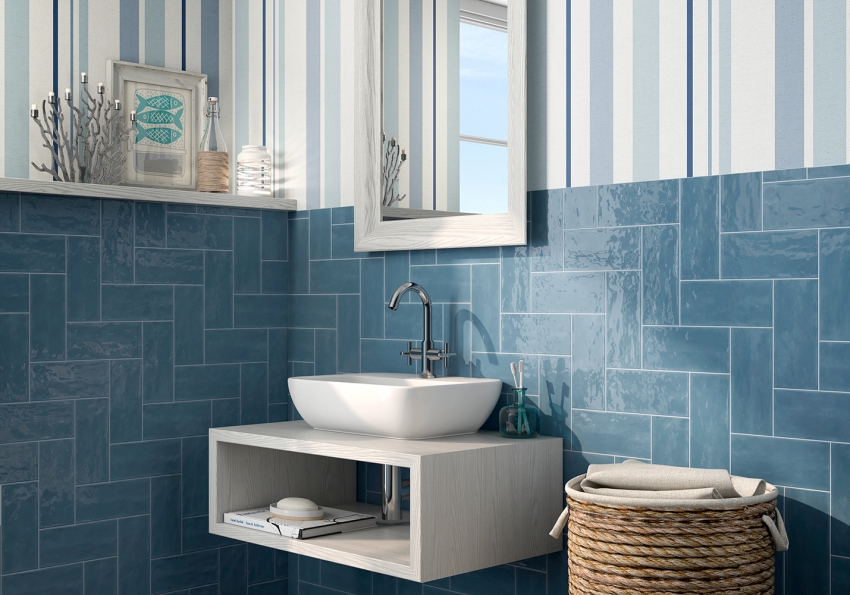
Long rectangle tiles are a trend in 2017, so examples of their use can be seen in modern interior design catalogs.
Bathroom tiles: the secrets of choosing the right material
The choice of bathroom tiles is based on an understanding of which characteristics are most important, and what should be paid attention to first. In some cases, improperly selected tiles become a serious obstacle to the design of the room. To avoid this, in addition to the color and shape of the elements, you need to pay attention to the following aspects:
- tile quality: all elements must have exactly the same shape, smooth surface without damage, depressions and protrusions;
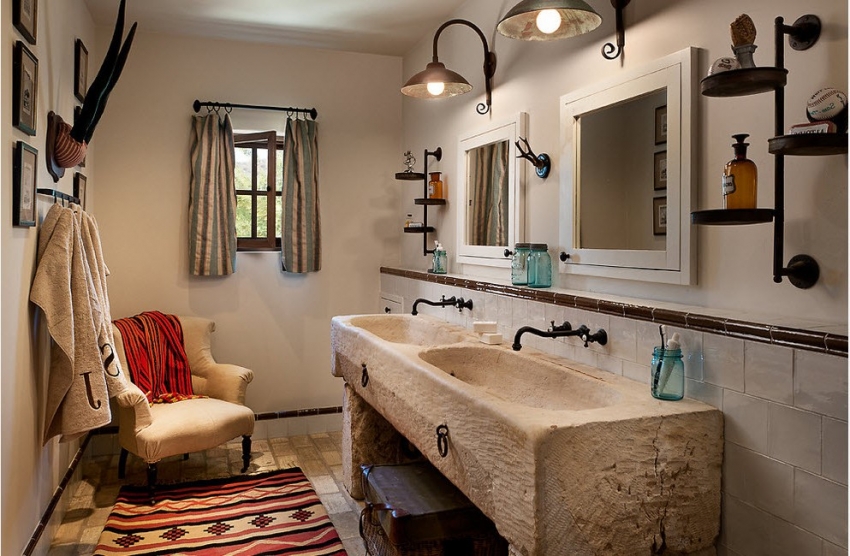
Country style involves the use of tiles to decorate only part of the room, which brings a special rustic charm
- the manufacturer in this case plays a significant role, since it often determines the quality of the material. It is best to give preference to popular foreign companies that have a good reputation and have been occupying a worthy position in the building materials market for several years;
- availability, as well as the location of the drawings, if any. The thing is that the background tile can be cut to the desired size without any problems, but cutting the ornament is problematic, since it is difficult to properly fit the pattern;
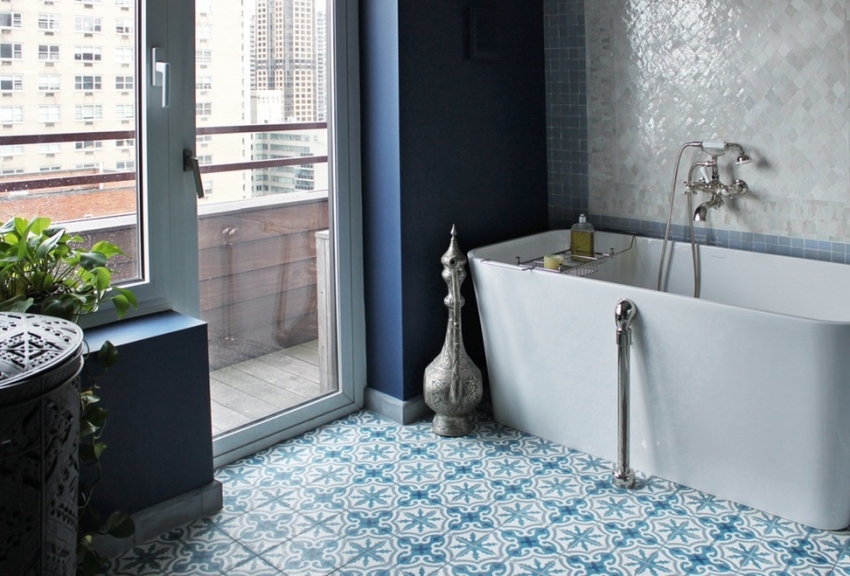
When decorating a bathroom interior, it is important to take into account the style color combination, which can be determined using color wheel
- collection availability. In some cases, manufacturers initially offer customers to purchase a ready-made kit for decorating the entire room, the elements in which are ideally combined with each other. Typically, these assemblies include wall and floor tiles, borders, decors, etc.
Helpful advice!A curb is not the right solution for a small bathroom. This element is appropriate only in large rooms, since its purpose is to create a single belt, which in a small bathroom will simply be covered by pieces of furniture and plumbing.

The use of monochrome contrasting shades of tiles is a fairly popular solution for decorating modern bathroom interiors.
Tile laying options in the bathroom: photo examples of technologies
The appearance of the room and its appearance largely depend on the way in which the tiles will be laid. Therefore, this issue should be approached as responsibly as possible, having considered all the popular options. First of all, let's pay attention to the existing styling methods:
- classic - you need to start gluing the tiles from the center of the room. This is not the most economical way, however, the styling looks very nice and neat in this case. In the corners, the tiles are simply cut to the desired size;
- you can start laying from the corner, gradually moving towards the opposite wall. But in this case, it is simply impossible to guess what the size of the last row of tiles will be. If you have to cut the elements to a narrow strip, this can significantly worsen the appearance of the wall or floor, but this method is one of the most economical;
- laying tiles from the center implies a completely symmetrical arrangement of elements. Unlike the classic one, in this case the center of the wall falls on the junction of the tiles, and in the corners two identical cuts are obtained.
Related article:
Ceramic tiles for the bathroom: design, photo samples
Types of ceramic tiles used for bathroom design. Photos of finished objects in various styles.
The worst of these methods is considered the "from the corner" method, since it is the most sloppy and can cause the surface to look unattractive. So if you have the opportunity not to save on material, it is better to abandon this decision in favor of the classic one.
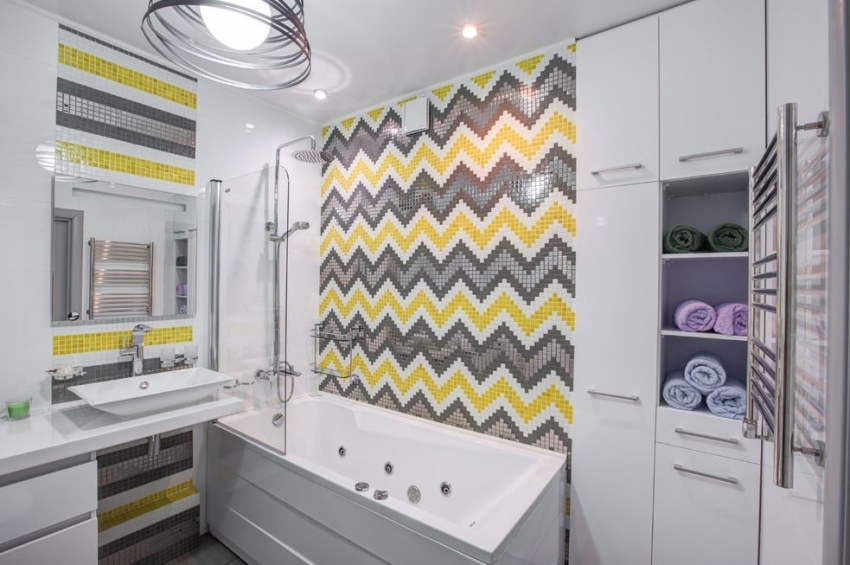
The use of clearly defined geometric shapes created using mosaic tiles is acceptable for decorating not the entire bathroom, but for accentuating one of the walls or highlighting arches, mirrors or niches
Helpful advice!In addition to laying methods, there are also tile layout options. In this case, much depends on the level of skill of the person who carries out the styling, as well as the personal preferences of the owners.
Bathroom tiling: custom styling options
Arrangement of a bathroom involves carrying out a variety of different communications necessary to use the devices that are in it. And in order to have access to them and the ability to carry out repair work at any time, they use inspection hatches that hide the pipes.
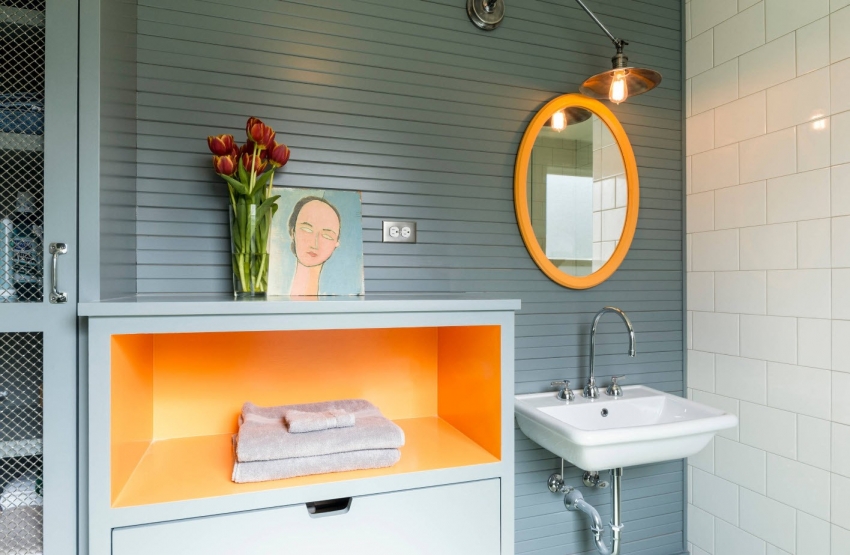
In the decoration of modern interiors, you can increasingly find combinations of ceramic tiles with other materials - wood, plastic panels or natural stone
In order for the revision window not to catch the eye and stand out against the background of the general design, tiles are often laid on top of its cover. In this case, it is best to use a center-to-center layout so that the undercuts are uniform and in the corners. Photos of ceramic tiles used for this purpose perfectly demonstrate how access doors should be located.
It is also worth paying attention to the design of additional structures, which are often erected from drywall. With this material, you can make additional boxes and partitions. But sometimes the owners use this method in order to increase the length of the supporting structure, and to be able to lay tiles without undercuts.
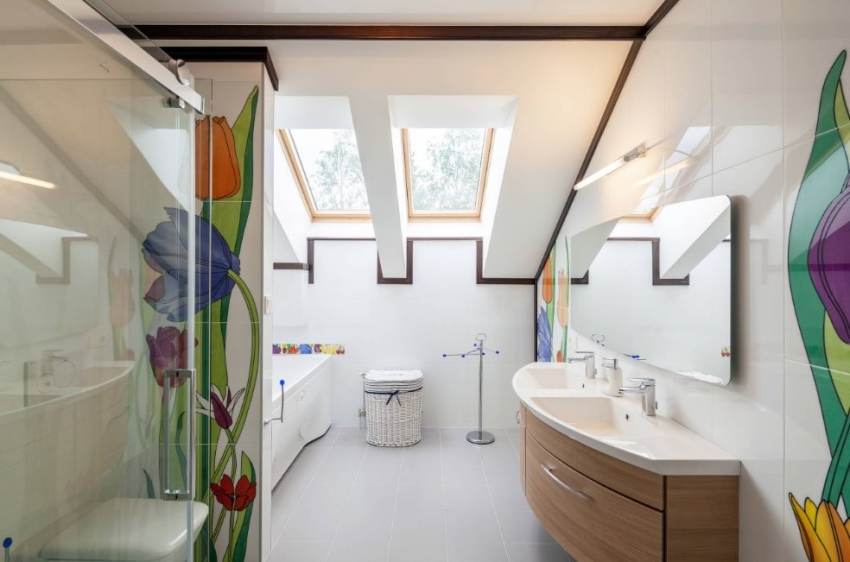
Modern manufacturers offer photo tiles on which you can apply a unique, author's drawing or choose a ready-made version from the catalog
At first glance, such a measure may seem unjustified, but in fact, this method is very effective even for small bathrooms. Considering the fact that the loss of usable space does not exceed a total of 0.2-0.5 m², and the interior is significantly improved visually due to this, it can be said that such a solution is worth considering.
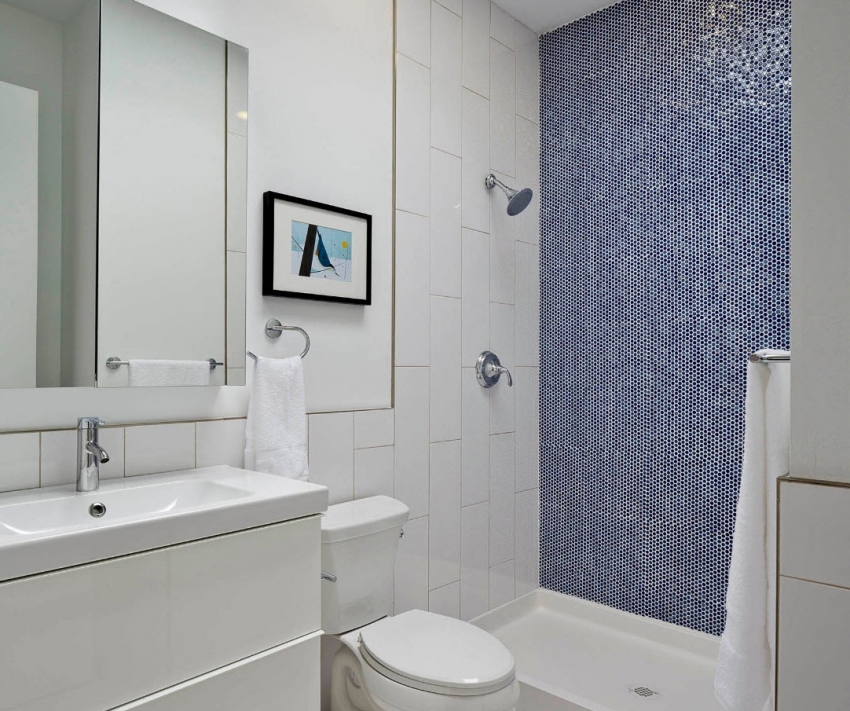
By laying tiles in a contrasting color on one of the walls, you can visually deepen the bathroom space
Helpful advice!In the process of laying tiles on the wall, it is better to give preference to the horizontal arrangement of the material than to the vertical one. In this case, the number of necessary narrow undercuts will decrease, and the size of the room will visually increase.
How can bathroom tiles be laid on the floor: photo examples
Tiles in the bathroom are used very often as flooring. At the same time, the installation method is chosen mainly classical, taking into account only a few additions. So, if we are talking about the design of a bathroom in which a shower stall is installed, then the tiles are laid on the entire surface of the floor, starting from the center. If, instead of a shower, a bathroom is installed, then the space is divided into two zones, for each of which its own centerline is determined.
Of course, the amount of trimming in this case increases, but nevertheless, due to this, it turns out to save the amount of large-format cladding. In addition, it is worth remembering that it is important to distribute the material in such a way that the trimming points are where the furniture or equipment will be located.
Bathroom Tile Color Basics: Room Design
Coloring is one of the main criteria for choosing a tile for a bathroom. After all, the room, as a rule, has a very modest size, and an abundance of incorrectly selected color or ornament can ruin the interior. Consider what colors are considered the most successful and photo options for finishing the bathroom with tiles:
- a dark floor is the best solution for a bathroom. On such a surface, dirt will be less visible, and if you also purchase a special grout that is immune to debris, this will make the task of cleaning even easier. The classic solution is the choice of beige or brown tiles, since such a flooring will look good in almost any interior;
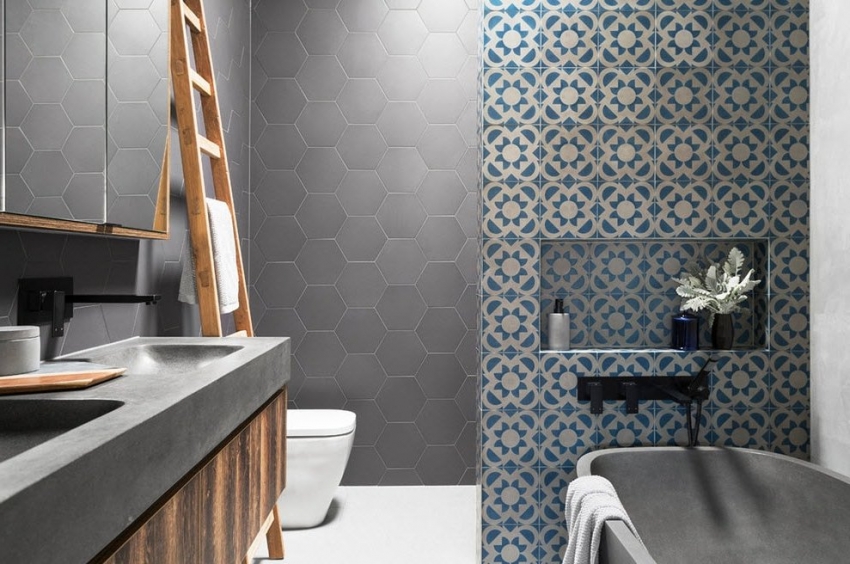
Using gray for bathroom decoration, it is important to choose the right shades of furniture, fittings and sanitary ware
- for walls, lighter colors are better suited, which will not overload the look. A traditional and very successful solution is the use of several shades of the same color. In this case, the lightest tile is laid in the middle, and the upper and lower layers have a slightly darker tone. Exactly how this should look like, you can see in the photo of finishing the bathroom with tiles using this method.
- as for the grout, it can be selected according to personal preference. It is best if its tone is slightly darker than the tone of the tile. So the room will not be visually overloaded, and in general the interior will look more attractive.
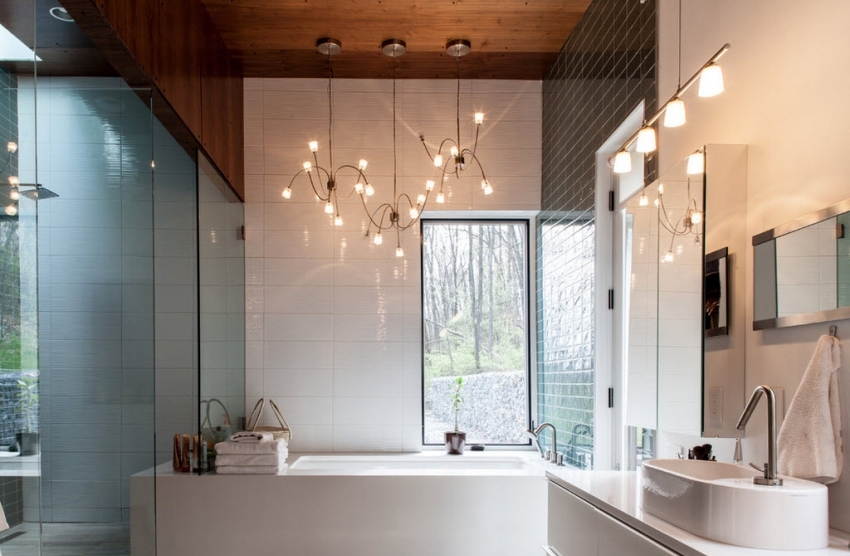
The beauty of glossy tiles in the interior can be emphasized with the help of original lighting solutions
Helpful advice!You can often find interesting ideas for decorating bathroom walls using various shades of background tiles that are stacked vertically. But in practice, this method does not justify itself, since very often the visualization is partially obscured by pieces of furniture.
Bathroom Tile Options: Secrets, Tips and Tricks
Looking through the numerous pictures of ceramic tiles, it is rather difficult to imagine exactly how such a solution will look in the bathroom. It is for this reason that you often have to turn to professional designers for help, who, using their skills and experience, can choose a solution that will achieve the desired effect.
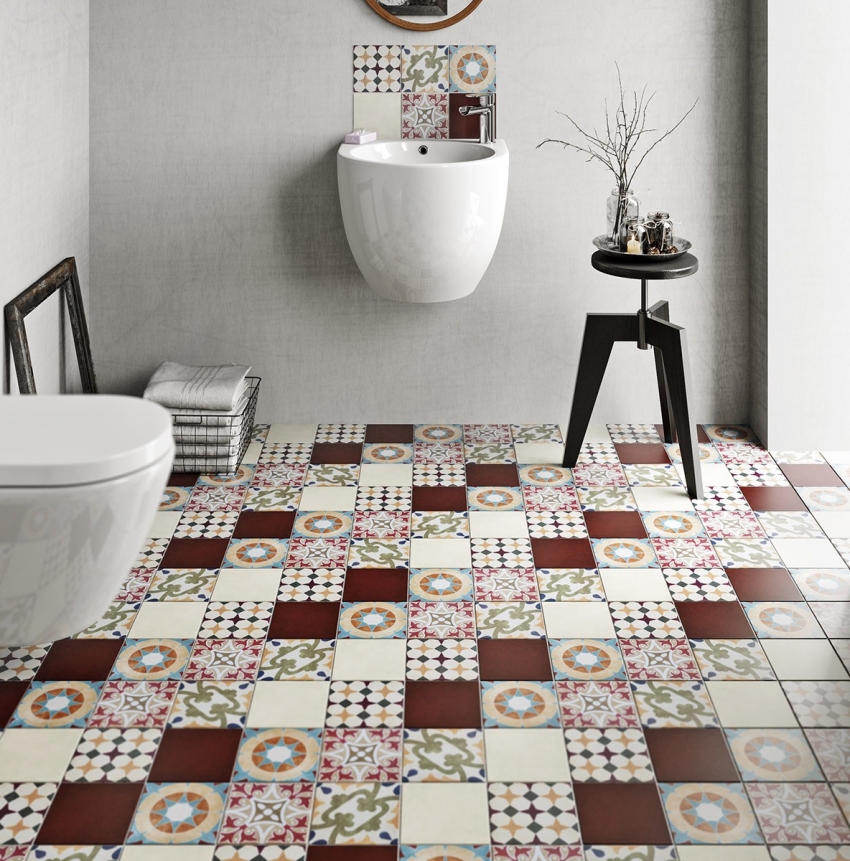
The interior of a bathroom decorated in light shades can be favorably emphasized with tiles in contrasting shades
But in fact, everyone can cope with this task on their own, if they approach the issue of choice responsibly and take into account some of the recommendations of specialists:
- the transition from a strip of dark tile to a lighter one should be located at a height of 7-10 cm from the bathroom;
- if we are talking about the design of the toilet space, then this transition should be located between the toilet bowl and the installation key. It is permissible to do this at any level, but it is still desirable to place it closer to the middle;
- the upper strip of dark tile, which is located under the ceiling, should consist of one or one and a half rows of tiles.
By following these simple guidelines, you can decorate your bathroom with tiles beautifully. The design in this case will be in no way inferior to what the designers can offer, and even the smallest bathroom will look impressive and presentable.
Mirror tiles in the bathroom: room design using unusual elements
Tiling a bathtub does not always involve the use of exclusively traditional tiles. As an interesting option, you can consider the use of mirror elements, which will affect the visual perception of the space, and bring originality and novelty to the interior.
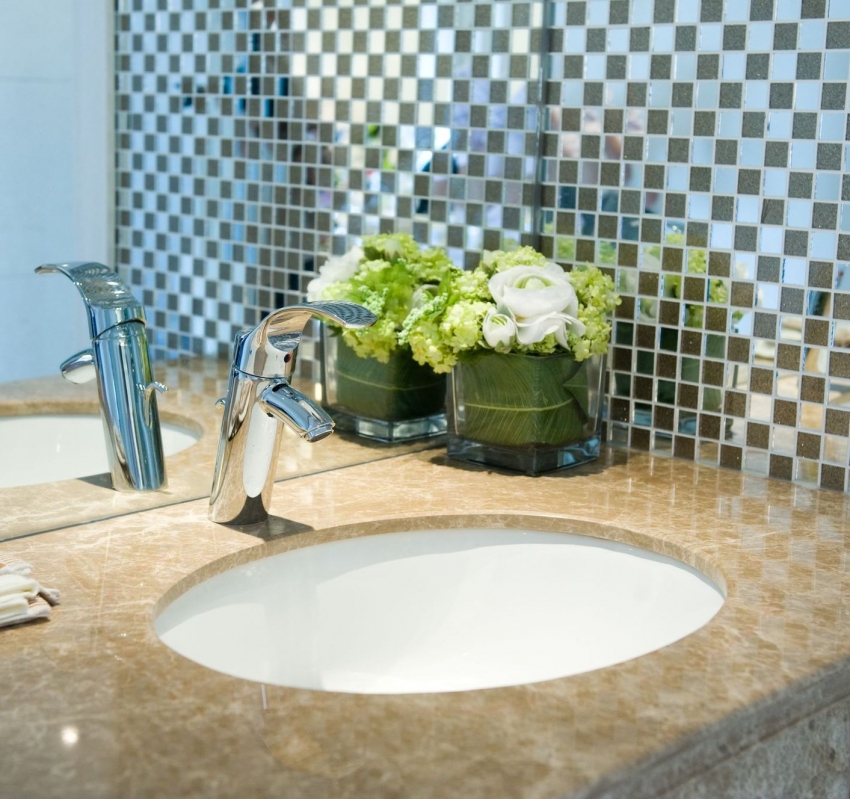
Mirror tiles can be used partially. which will emphasize the main color of the design and expand a small room
Consider the popular finishing methods:
- a combination of traditional ceramics and mirror tiles. In this case, dark-colored tiles are best suited, which will act as a background for mirror inserts. This design looks extremely elegant and sophisticated;
- using mirror tiles for the ceiling. This is a great way to expand the space and visually raise the ceiling. As part of this solution, the creation of a narrow mirror strip on one of the walls of the room is also encouraged;
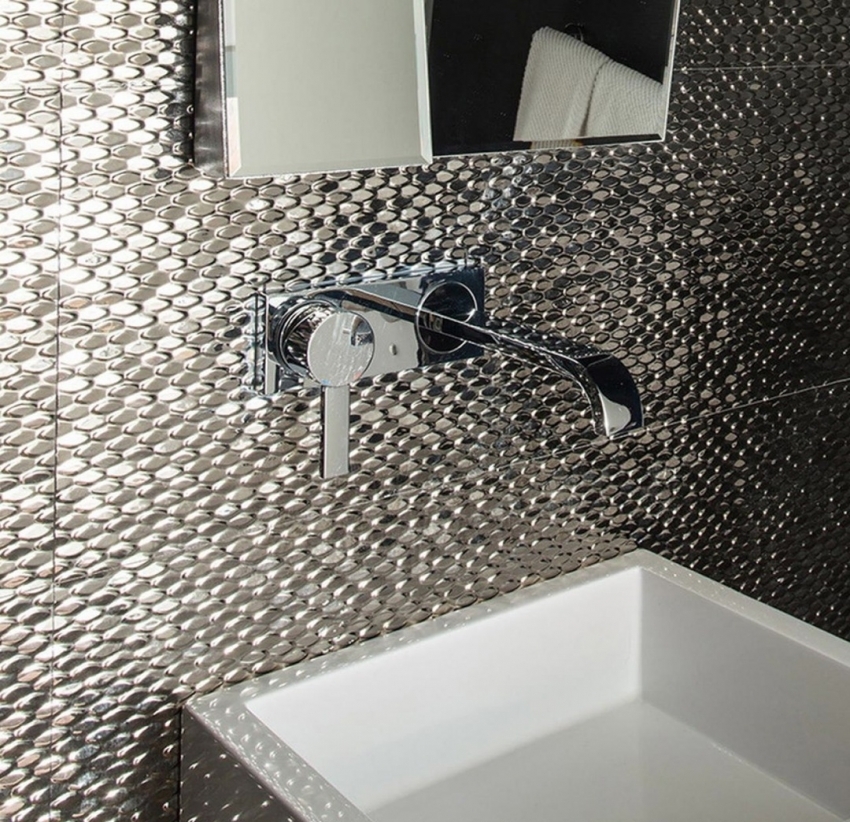
Mirror tiles can have different colors and textures, so this type of material can be used to decorate an accent wall in a bathroom.
- mirror tiles opposite the window. If there is a window in the room, then making a mirror insert opposite it is a great idea. This will increase the amount of sunlight in the bathroom. The advantages of this method can be seen in the photo of the bathroom design with tiles with a mirror surface.
Helpful advice! Despite the positive effect that mirror tiles can have on the perception of the bathroom space, you should not overdo it with this material. If you overlay all the walls and ceiling with mirrors, there will be too many reflections, which will create a "cage" effect.
Advantages and disadvantages of using mirror tiles for a bath photo examples of interiors
Mirror tiles are not often used in the process of decorating bathrooms for two reasons: during transportation, and stacking, this material is quite susceptible to damage. Also, in order for such elements to retain their original appearance for a long period of time, there must be high-quality ventilation in the room.
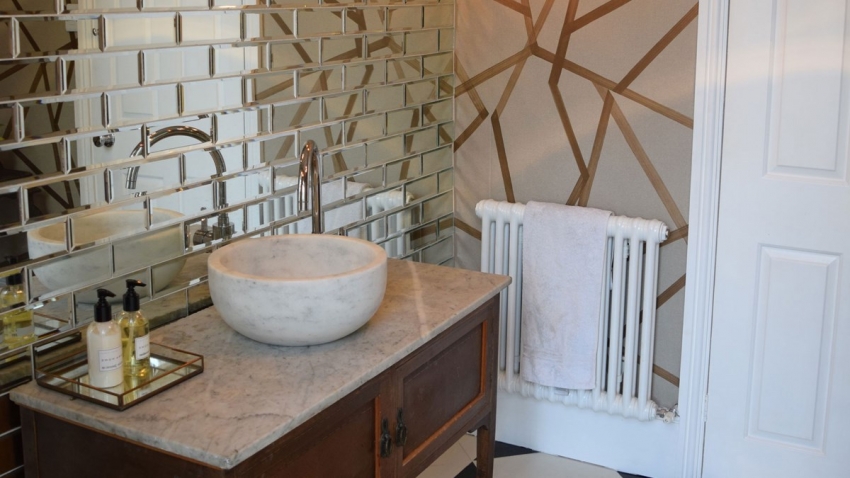
During the installation of mirror tiles, special care must be taken not to damage the rather fragile surface of the material.
However, provided there is a good ventilation system and careful handling during the installation process, this material will be able to please its owners with such positive characteristics:
- long service life;
- resistance to chemical elements (alkalis and acids);
- fire resistance;
- a variety of tile colors: the bathroom can get any look.
Features of mounting mirror tiles
It is not difficult to lay mirror tiles on your own. However, this process requires knowledge of certain subtleties and nuances that will allow you to achieve the desired result. You can use silicone or liquid nails for fixing. A glass cutter is used to trim the elements.
Here are a few more recommendations that will allow you to fix the tiles as easily and efficiently as possible:
- the back of the tile must be rough. For this, bitumen and coarse sand can be used if its surface is smooth and opaque. In the case of working with transparent elements, bitumen can be replaced liquid glass;
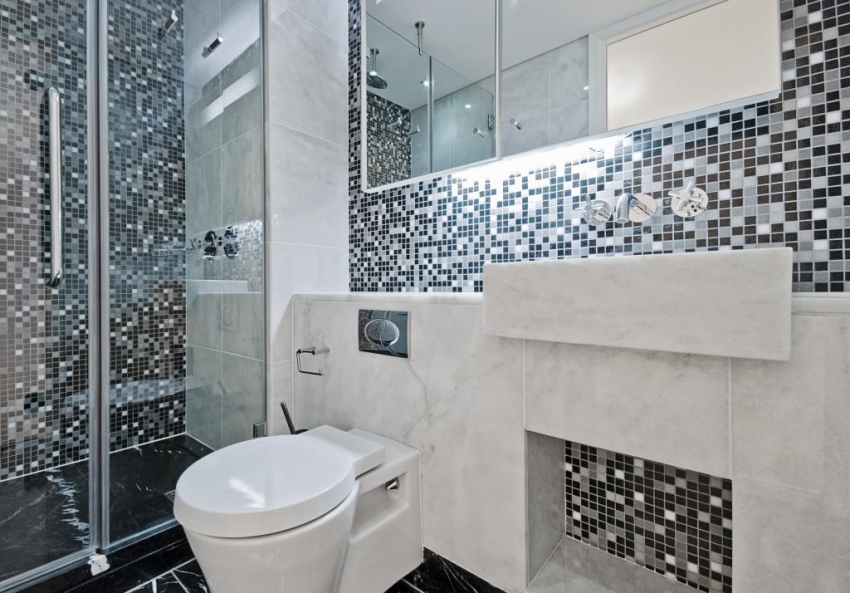
To decorate a small bathroom, it is worth using small mosaic tiles, which can be emphasized with the help of mirror elements
- the selected adhesive should not contain acids, as this can provoke the appearance of blackouts;
- the width of the joints between the elements should not be more than 4 mm;
- in the process of laying the first layer, it is very important to pay attention that it is oriented horizontally;
- after laying the tiles, it is advisable to wait a few days, and then grout the joints with neutral silicone. At the same stage, you can polish the mirror surface.

A high-quality ventilation system is a prerequisite for the installation of mirror tiles, so that the surface is always glossy and does not fog up
Compliance with these recommendations will make the surface flat and smooth. And in terms of service life, mirror tiles will be in no way inferior to ordinary tiles.
Helpful advice!In order to keep the mirror tiles intact, after removing the protective film, it is necessary to avoid contact of the surface with sharp objects, as they can cause irreparable damage.
Fresh ideas for decorating a bathroom with ceramic tiles: photos of the best interiors
When choosing a tile color and texture, you can be guided solely by your own preferences. And you can also make a choice based on photos of tiles in the bathroom, which are offered in large numbers on various Internet resources. Consider what interesting ideas you can borrow to create your own interior.
It is far from always worth giving preference to large tiles. Moreover, today manufacturers are able to apply a huge selection of small tiles with a mosaic effect. From such small elements, you can lay out vertical or horizontal lines, or you can even create a whole pattern. How impressive this solution looks can be seen in the photo of the bathroom tile, the design of which was created using mosaics.
Using this method, you can change the visual space and adjust the shape of the room. This method works especially well if there is a need to "raise" the ceiling. But using a diagonal layout, you can increase the volume of the room and create a feeling of lightness of space.
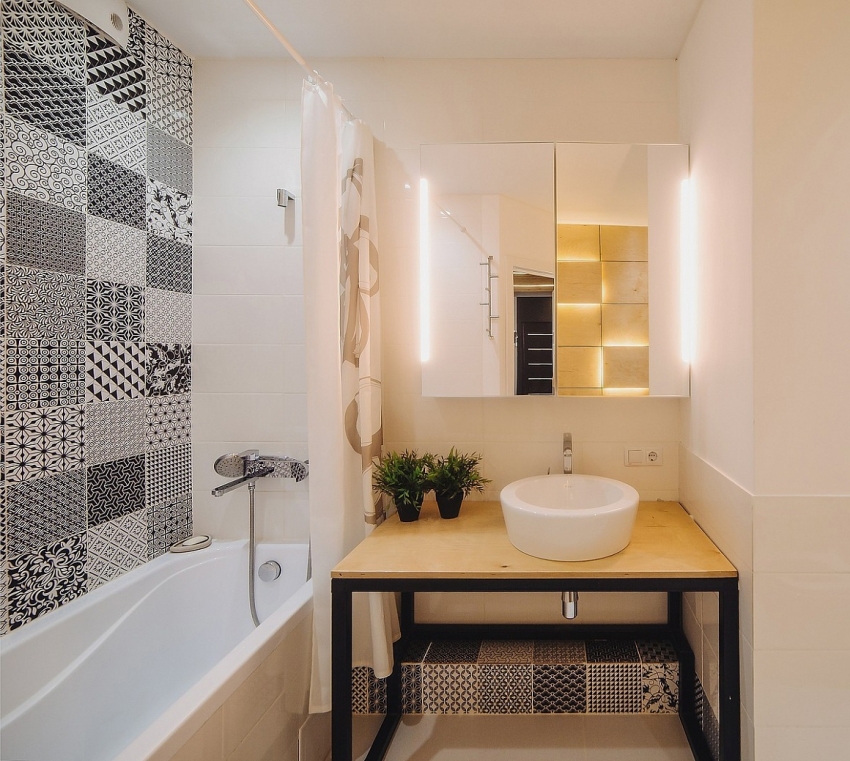
An example of the right combination of black and white tiles and warm materials to create a cozy design bathroom interior
Particularly noteworthy are tiles that imitate bricks or other materials - stone, wood, etc. Imitations are very popular today, so there are bathrooms where entire walls are decorated using such material, bringing a very unusual mood into the room.
What can be the shape of a tile in a bathroom: photo examples
Among the most daring design solutions, you can find tiles of an unusual shape, for example, imitating honeycombs or in the form of rhombuses. There are also options for completely asymmetrical shapes. Of course, creating a design in a bathroom using such elements requires more costs and efforts than in the case of using a traditional material, but looking at a photo of ceramic tiles for a bath of this type, you can come to the conclusion that it is worth it.

When decorating a bathroom, it is important to take into account the general style of the house so that the interior looks harmonious
Interesting!Many designers recommend paying attention to rounded tiles. According to them, such a solution, despite its originality and strangeness, can make the interior feel cozy.
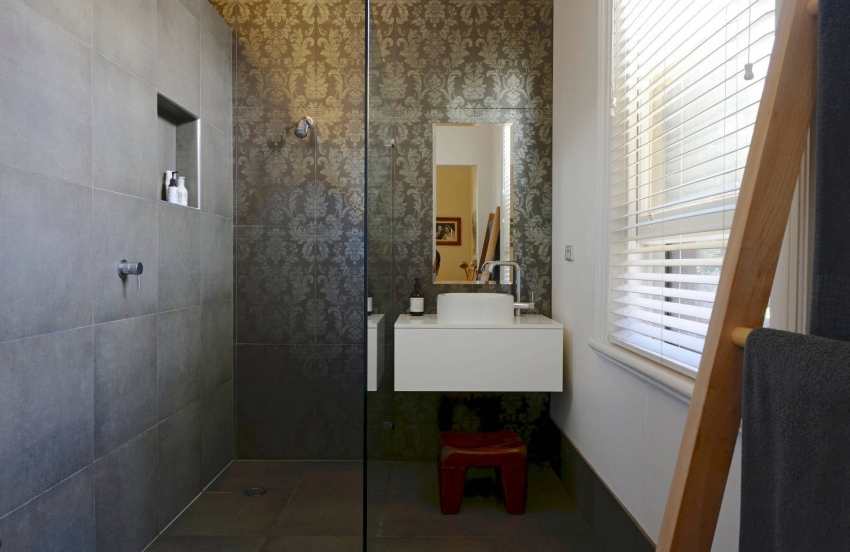
When using tiles with imitation of natural stone, it is important to think over the color scheme of decoration in advance so that the room looks harmonious
It is allowed to combine various forms of tiles in the bathroom, as well as the use of elements of unequal shapes. At the same time, it is important that the overall impression of the room remains complete. To do this, before starting work and purchasing the selected materials, it is advisable to prepare a sketch that will demonstrate how the final result will look like.
Particularly popular is the tile, which is designed to imitate not only natural materials. More and more often you can find photo tiles, which are rightfully called an endless platform for imagination. After all, you can apply absolutely any drawing that you like to it. Using this technology, even the most ordinary bathroom can create a beautiful garden or a desert island in the ocean. What will be the picture of the bathroom depends on the preferences of the owners.
Embossed ceramic tiles in the bathroom: options and examples
Thanks to the embossed surface of the tiles, the interior can be given a special sophistication and mood. You can, for example, choose tiles for walls with a relief of wavy lines or rhombuses. And you can combine these effects to achieve an even more interesting result.
Helpful advice! Embossed tiles are a great way to mask surface irregularities and highlight the positive aspects of the layout. Photos of tiles in the bathroom demonstrate how successfully you can transform the interior using this finishing method.
One of the most modern and unusual solutions is the choice of patchwork tiles. In this case, it consists of individual elements with different patterns or sizes, which allows you to create the effect of a patchwork quilt. In order to achieve this effect, it is not at all necessary to purchase special kits, which usually have a considerable cost. It is quite possible to use for this several separate types of tiles that go well with each other.
Varieties of tiles in the bathroom: photos and prices of some options
In the process of familiarizing yourself with the catalogs of ceramic tiles for the bathroom, you can pay attention to the wide price range that is characteristic of this material. The cost is determined by the size of the bathroom tile, as well as its type and manufacturer. Let's look at a few examples to understand what prices a buyer will have to face.
Quite high quality, but simple material will cost the buyer about 550-750 rubles per 1 m². In this price category, the choice of tiles is quite large, and its characteristics meet all the basic requirements that are imposed by the operating conditions.
But if the owners want the ceramic tiles in the bathroom to be really the best, then you should pay attention to the products of famous foreign companies. So, on sale you can find high-quality finishing materials made in Spain. Ceramic tiles in this case will cost the owners about 1500-2500 rubles per 1 m².
It can be concluded that choosing a tile for bathrooms is a difficult but very interesting task. Due to the presence of a large number of options, everyone can choose exactly the one that suits their taste and implement their own ideas and ideas in this small, but very functionally important room.
